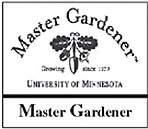August 21, 2003 at 9:27 a.m.
Gary Johnson called Dutch elm disease the "Angel of Death". This disease goes through elm trees with a vengeance with little means of control. He claimed the next Angel of Death will attack our ash trees. The emerald ash borer, an Asian bug that hopped a ride to America, infested five million ash trees in Michigan, Ohio and Ontario in 2002, the year it was discovered.
Foresters fear that it will spread eventually to the northern forests of Minnesota. Northern Minnesota has the highest concentration of ash trees in the United States. Since more than one fourth of our trees in Minnesota are ash, there is a real concern. Especially since ash trees were frequently planted to replace elms killed in the Dutch elm epidemic of the 1960's and 1970's.
Professor Johnson writes that the fungus that causes Dutch elm disease was brought to the United States from Europe in lumber shipments. The disease is transmitted by a flying beetle and firewood. The emerald ash borer is spreading much faster than Dutch elm disease did. One reason is that people now move firewood much farther than they did during the Dutch elm epidemic.
Ralph Sievert, the Directory of Forestry for the Minneapolis Parks and Recreation, writes that foresters will have to adapt to a different method to contain the pest than that used with Dutch elm disease. Healthy ash trees in the infected area along with diseased trees may need to be removed to control the pest.
This borer belongs to the metallic wood boring beetles in Minnesota including the bronze birch borer and the two lined chestnut borer. Emerald ash borers are a little larger and brighter than these species. These slender beetles range in size from about one third to one-half inch long and are a bright iridescent coppery green color. Adult beetles begin to emerge in mid to late May until late June. Females lay eggs on the surface of the bark or in small cracks in the bark. Eggs hatch in seven to 10 days.
The whitish flat head borers tunnel into the cambial layer and create a series of winding criss crossing galleries under the bark in the phloem and outer sapwood. They feed until fall then over winter as fully grown larvae. They pupate the following spring and the adults emerge in May and June.
The emerald ash borer commonly attack the unhealthy and stressed trees but will vigorously attack growing trees of any size and all kinds of ash species.
The ash borer has not yet been found in Minnesota to date. It most likely would do well if it is introduced here. The Minnesota Department of Agriculture is very interested to determine whether the ash borer is present in Minnesota. Remember this insect will attack all ash trees native to Minnesota. If you find any ash that have unexplained dieback or other symptoms of the emerald ash borer or has recently died mysteriously, report it at the Minnesota Department of Agriculture's "Arrest the Pest" hotline at (651) 296-MOTH (6684) or 1-888-545-MOTH (6684).
The key to healthy forests is to diversify our city boulevards and country landscapes with a variety of properly adapted trees for our region. To learn more about this topic or others, go to the U of M Extension Service web page at www.extension.umn.edu and search. Or, you may call our Yard and Garden Line anytime and leave a message at (612) 624-4771. A Master Gardener will return your call. The Master Gardeners also staff the Extension Office on Monday from 4:30 to 8 p.m. Call (651) 674-4417 or drop by with your samples and gardening questions.




Comments:
Commenting has been disabled for this item.